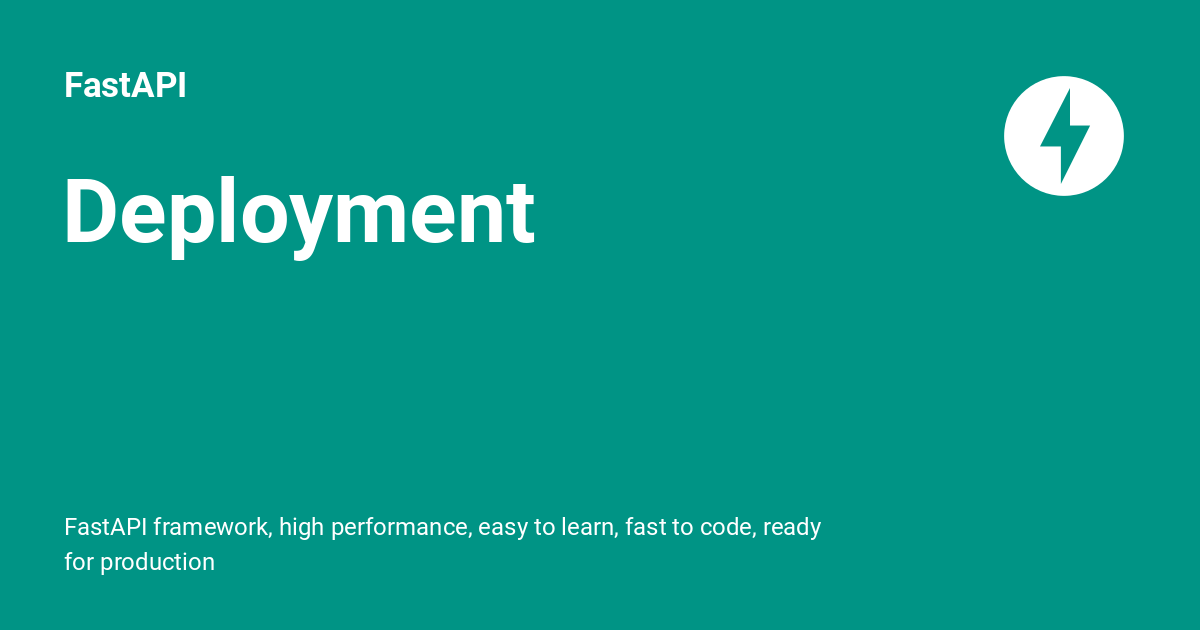The Ultimate Guide to Deploy FastAPI Application on Ubuntu with Nginx
 Imam Hossain Roni
Imam Hossain Roni
I am assuming that you have an Ubuntu server and it's 18.04 or later that could be from the EC2 instance or any other VPS from DigitalOcean or Azure.
Firstly, Update & upgrade the existing packages with the blew command
sudo apt update
sudo apt upgrade
Install python3, pip and virtualenv:
sudo apt install python3 python3-pip python3-venv
Let’s set up your FastAPI application, initially Create a new directory in home with name backend
mkdir backend
Take a clone of your project from git inside the backend directory
git clone <your project repository URL>
Set up a Python virtual environment (venv) and activate the virtual environment:
python3 -m venv venv
source venv/bin/activate
Then install all packages in your requirements.txt file:
pip install -r requirements.txt
Make sure that uvicorn installed in your virtual environment. If not installed then run the blew command
pip install uvicorn
Now I am assuming that you are in backend directory and you have already installed the prerequisite packages successfully and you can now start your application with the blew command
uvicorn your_app_module:app --host 0.0.0.0 --port 8000
# N.B: Replace your_app_module with the Python module where your FastAPI app is defined.
So far so good. To deploy your FastAPI application with the specified uvicorn command, you need to ensure that the application runs continuously and reliably. One common approach is to use a process manager systemd to manage your application as a service on your Ubuntu server. Here's a step-by-step guide to deploying your FastAPI application using systemd:
Create a systemd service unit file to define how your FastAPI application should be managed.
sudo touch /etc/systemd/system/backend.service
In this file, define the service as follows, adjust the paths and settings as needed, and save it.
[Unit]
Description=FastAPI Application
After=network.target
[Service]
User=ubuntu
WorkingDirectory=/home/ubuntu/backend/your-project/
ExecStart=/home/ubuntu/backend/project/venv/bin/uvicorn your-project.app:app --host 0.0.0.0 --port 8000
Restart=always
[Install]
WantedBy=multi-user.target
Reload systemd to recognize the new service and start your FastAPI application as a service:
sudo systemctl daemon-reload
sudo systemctl start backend
If you want your FastAPI application to start automatically when the server reboots, enable the service
sudo systemctl enable backend
Check the status of your FastAPI application service to ensure it's running without errors
sudo systemctl status backend
If you encounter any errors in the process I have already discussed then try to follow the instructions accordingly and fix it.
If you want to serve your FastAPI application behind a web server like Nginx, you can set up a reverse proxy to forward requests to your FastAPI application. This can help with load balancing, SSL termination, and other server-related tasks
Let’s install nginx on Ubuntu server
sudo apt-get install nginx
Create a new Nginx server block configuration file for your FastAPI application. You can create a file in the /etc/nginx/sites-available/ directory. For example:
sudo vim /etc/nginx/sites-available/backend.conf
Inside this file, configure the reverse proxy settings for your FastAPI application. Here's an example configuration:
server {
listen 80;
server_name 21.216.178.231; # Replace with your actual domain name or IP address
location / {
proxy_pass http://127.0.0.1:8000;
proxy_set_header Host $host;
proxy_set_header X-Real-IP $remote_addr;
proxy_set_header X-Forwarded-For $proxy_add_x_forwarded_for;
}
access_log /var/log/nginx/backend-access.log;
error_log /var/log/nginx/backend-error.log;
# Additional Nginx configuration can be added as needed
}
Create a symbolic link to enable the Nginx server block:
sudo ln -s /etc/nginx/sites-available/backend.conf /etc/nginx/sites-enabled/
Test the Nginx configuration for syntax errors:
sudo nginx -t
If there are no errors, proceed to the next step. Restart Nginx to apply the configuration changes:
sudo systemctl restart nginx
Now your backend is accessible from the internet, but it doesn’t meet the industry standard yet because https isn’t available and many more nginx config could be added there. However, try to test your work by going to http://<your domain/IP> with a web browser.
Subscribe to my newsletter
Read articles from Imam Hossain Roni directly inside your inbox. Subscribe to the newsletter, and don't miss out.
Written by

Imam Hossain Roni
Imam Hossain Roni
I'm a passionate software engineer with a knack for creating robust and efficient web applications. I thrive on tackling complex problems and crafting elegant solutions. When I'm not coding, you can find me sharing my tech insights on my blog, exploring exciting open-source projects, and staying updated with the latest technologies. What I Do ✨ Writing at Abstract Thoughts 🤔 🐛 Fixing bugs and optimizing code for peak performance 😄 🏢 Currently working remotely as a Software Engineer 🌱 Passionately learning and contributing to Open Source projects